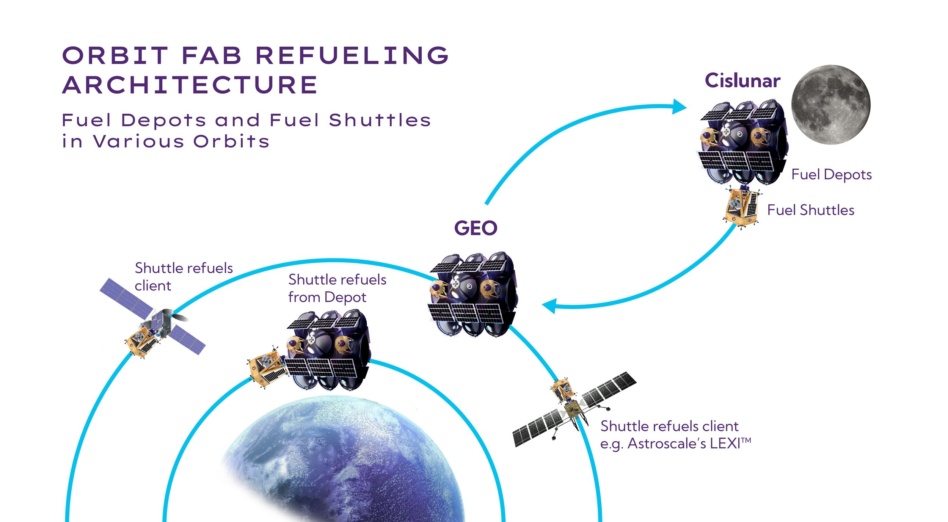Prices at the pump may have cooled off and started coming down here on Earth, but topping off the tank in geostationary (GEO) orbit will still cost you a pretty penny.
How much?
Orbit Fab has announced a flat rate price of $20M for hydrazine fill-ups in GEO, which it aims to start in 2025. While we had to make the gas price joke up top, bear in mind that A) everything in space is expensive and B) operating in GEO is especially pricey, with spacecraft that cost hundreds of millions to billions of dollars.
And that’s how you could back into the $20M price, and why the pitch starts to make sense. Rather than let spacecraft run out of fuel and have to go through the rigamarole of launching a replacement, Orbit Fab is offering to refill fuel and squeeze more life (and $$$) out of the satellite.
Orbit Fab will sell up to 100 kg of hydrazine for $20M a pop in a special orbit above GEO. In selecting where to place its first tankers and what fuel to offer, Orbit Fab is “following the customers,” CEO Daniel Faber told Payload. The company has contracts with both government and commercial entities.
RAFTI
Orbit Fab is selling RAFTI, its fueling port, to customers today. Payload saw it in person a couple weeks ago…and it’s tiny.
RAFTI has “been adopted and designed into almost 250 spacecraft,” Faber said. Those spacecraft will be able to refuel directly at an Orbit Fab depot. Alternatively, RAFTI-equipped spacecraft operators can call for an Orbit Fab fuel shuttle, which will take the goods directly to them.
- Note that these 250 spacecraft don’t all have refueling purchase orders. Their operators are just thinking proactively and giving themselves the “optionality” for refueling, Faber said.
- Orbit Fab has named one refueling customer, Astroscale US, which is developing robotic satellite servicers and life extension vehicles. Under the terms of the initial deal, Orbit Fab will supply Astroscale’s fleet of LEXI servicers with one metric ton (1,000 kg) of fuel.
Missing the port?
For spacecraft that need modifications on-orbit for refueling, operators will have to call one of the many “tow truck” operators, Faber said. He counts ~110 companies working on these tow trucks, a broad term that encompasses space tugs, orbital transfer vehicles, satellite servicers/inspectors, etc.
Transparency
By publishing pricing details, Faber said Orbit Fab is sending a clear signal to the market and helping companies build the cost of refueling into financial models and business plans. The Colorado startup is taking a page out the SpaceX playbook—years ago, the launcher kicked off the then-unprecedented practice of transparently posting its prices online, rather than making customers go through multiple rounds of sales calls.
“I’m a firm believer that that’s one of the frictions in the industry that we have to get away from,” Faber said. “Everything gets so much easier when there’s transparency.” The company has started with hydrazine/GEO pricing because A) the fuel is the most popular with Orbit Fab’s customers and B) “geostationary orbit is effectively a single inclination and a single altitude,” making it conducive to standard pricing.
But the startup is also thinking through custom pricing plans for refueling services in LEO, and will have more to say on that front soon.




